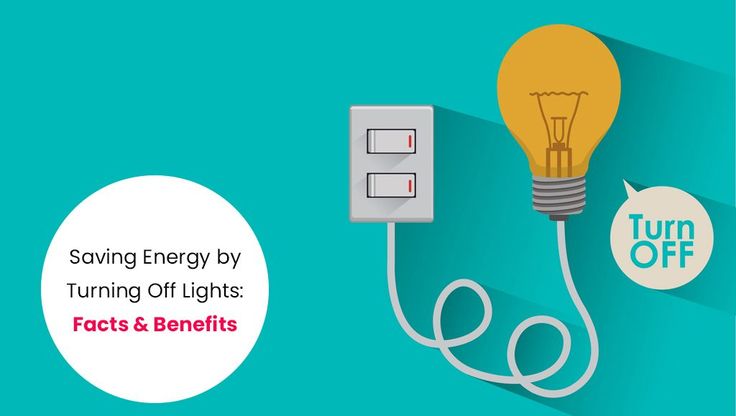Turning off lights when they are not in use is a simple yet profoundly effective method of conserving energy. While many individuals may habitually switch off lights out of convenience or habit, the broader implications of this action bear substantial merit, particularly concerning climate change and energy consumption. This article delves into the mechanics of energy conservation through the strategic practice of turning off lights, exploring not only the environmental benefits but also the economic advantages that emerge from such a negligible adjustment in daily routines.
At its core, the act of turning off lights serves as a fundamental demonstration of energy conservation principles. Lighting represents a significant portion of household electricity consumption, particularly regarding incandescent bulbs, which are notoriously inefficient. When left on, these electrical devices draw power continuously, leading to inflated energy bills and an increase in greenhouse gas emissions from power plants that supply electricity.
To understand how turning off lights can conserve energy, it is necessary to grasp the underlying mechanics of how electricity is generated and consumed. Electricity generation typically relies on the combustion of fossil fuels, nuclear power, or renewable resources. The majority of electricity in many regions still derives from fossil fuel sources, which emit carbon dioxide and other pollutants into the atmosphere. Each kilowatt-hour consumed in homes translates into emissions that contribute to global warming. By turning off lights, homeowners not only reduce their immediate energy consumption but also curtail the overall demand for electricity, thereby lessening the environmental burden associated with energy production.
The efficiency of lighting technology further influences energy conservation. Traditional incandescent bulbs convert less than 10% of the electricity they consume into visible light, with the remainder dissipating as heat. In contrast, energy-efficient alternatives such as Compact Fluorescent Lamps (CFLs) and Light Emitting Diodes (LEDs) utilize a significantly smaller fraction of energy and emit very little heat. However, the principle remains the same: turning off any light source, regardless of its efficiency, contributes to reduced energy consumption overall. This practice also extends to outdoor lighting, which is often left unattended, wasting energy unnecessarily.
Additionally, turning off lights also intertwines with behavioral and cultural dimensions. It fosters a mindset of awareness and responsibility towards energy consumption. When individuals make conscious decisions to power down, they cultivate eco-friendly habits that can permeate their lifestyle choices, encouraging a broader discourse on sustainability. As these habits proliferate within communities, the cumulative effect can lead to a significant decrease in overall energy usage across neighborhoods.
The economic implications of this practice also merit exploration. From an individual perspective, the cost savings associated with reduced electricity usage can be substantial. By simply switching off lights when leaving a room, the average household can save tens of dollars annually. For larger establishments, such as offices and commercial buildings, the savings are magnified, with energy-efficient practices contributing to lower operational costs. These reductions can eventually allow for reinvestment in other sustainable practices or technologies, such as solar panels or energy-efficient appliances, further extending the benefits of turning off lights.
In an organizational context, adopting a culture that promotes energy-efficient practices—such as promptly turning off lights—can lead to tangible financial rewards. Many businesses are actively searching for avenues to enhance financial performance while demonstrating corporate social responsibility. By implementing energy-saving policies, including mandatory energy audits and behavioral training for employees, organizations can significantly lower their energy expenditures. These practices not only improve the bottom line but enhance the corporate image, resonating well with environmentally-conscious consumers.
Furthermore, the act of turning off lights serves as a catalyst for larger discussions surrounding energy policy and the impact of daily habits on climate change. As individuals witness the tangible benefits of their eco-conscious choices, they may be motivated to engage in advocacy for policies that promote renewable energy sources or energy efficiency incentives. This grassroots movement can lead to structural changes within local and national governments, emphasizing sustainability as a priority in legislative decisions and community planning.
Turning off lights may seem like a mundane task, but its significance in the broader narrative of energy conservation cannot be understated. It is an emblematic action that highlights the intricate relationship between individual behavior and collective impact on the environment. In the context of climate change, every action counts. Individuals wield the power to drive change through conscious decisions that not only conserve energy but also lessen carbon footprints.
In conclusion, the practice of turning off lights goes beyond a mere habit; it embodies a philosophy of energy conservation and environmental stewardship. As communities continue to grapple with the challenges posed by climate change, simple actions can foster awareness, incite behavioral shifts, and lead to substantial energy savings. Embracing the principle of powering down can reduce electric bills and decrease greenhouse gas emissions, contributing to a healthier planet for future generations. The message is clear: the power to make a difference lies in our hands, light switch by light switch.







